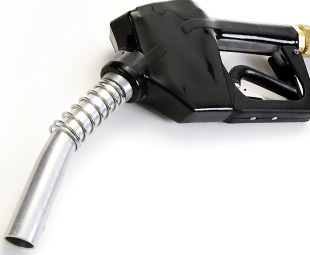Go with the flow

Despite increasing pressures, the task of fuel distribution in South Africa is a challenge being met head-on by various key role players. GAVIN MYERS attended the Future Fuel Distribution Strategies for Southern Africa conference for some insight.
“Keeping Gauteng wet” was a phrase mentioned by many speakers at the Future Fuel Distribution Strategies for Southern Africa conference held early in November. This is becoming an increasingly difficult task, but with the province being South Africa’s heartbeat, keeping it “wet” is just as critical as ever.
Dr Jan Havenga, director of the Centre for Supply Chain Management at the Department of Logistics at Stellenbosch University, says the transporting of fuel is derived from the demand for transport itself, which in turn is derived from economic growth.
The transportation of fuel in South Africa totals 4% of the country’s freight demand. Ivan Terblanche, engineering executive at GRW Engineering, further adds that there are approximately 35 000 fuel tankers active every day around South Africa, according to the Road Freight Association (RFA). Further to this, the country currently imports over 30% of its refined product.
In simple terms, our demand outstrips available local supply.
The big problem is that South Africa is a “spatially challenged” country, meaning we are heavily dependant on transportation for our commodities, and thus transportation of fuel is vital. By way of example, Havenga says fuel cost is the highest driver in freight transport, with two thirds of the industry’s R40 billion fuel bill being spent on our long trade corridors.
He adds that, currently, SA’s logistics costs are too high, especially in relation to our GDP per tonne-kilometre. We transport, by road, about 875 million tonnes of goods over an average distance of 340 km – giving a total of 297 billion tonne-kilometres. This comes at a cost of R155,5 billion, or 48% of the country’s total logistics costs. In short, South Africa needs too much freight to run its economy.
There was consensus among the conference speakers that the country does not use its various modes of transport (road, rail and pipeline) efficiently and effectively, either. The total cost of logistics in 2009, for example, could have been R2,4 billion less, if fuel and other related resources were used as efficiently as possible.
Conference chairman, Joe Rule, marketing director of Fuelogic, outlined various trends, threats and opportunities defining the local fuel industry. To begin with, South Africa’s existing infrastructure is simply not coping with demand and is being run on very much a day-to-day basis. There is also an increased incidence of unplanned and badly planned refinery shutdowns, as well as breakdowns. Further to this, there is a shortage of fuel at many depots, and the current Durban-Johannesburg pipeline is running at reduced capacity due to cracking and low pressure. Rail is also concentrating on other commodities rather than fuel, despite transportation by rail making better economic sense for the fuel industry.
SA also supplies product to neighbouring states, but this, too, is becoming increasingly challenging. Botswana’s government, for example, willingly imports 50% of its fuel requirements from sources other than South Africa at a premium. Our cross-border fuel exports are becoming more difficult due to border delays, low product availability, theft, high fees and tolls – as well as bribery and corruption.
Possibly the most important solution to the current problem is Transnet’s New Multi-Product Pipeline (NMPP), expected to come into operation on January 1, 2012. Avhapfani Tshifularo, executive director of the South African Petroleum Industry Association (SAPIA), expects the new
600 mm (24-inch) NMPP to cut current road haulage of fuel from Durban to Gauteng by at least 60% when it comes into operation.
To provide some perspective on the impact the new pipeline is expected to have, Leslie Naidoo, commercial manager for Transnet Pipelines, provides the following figures for Transnet’s current pipeline network: 18 billion litres of different petroleum products are transported through the network annually (the equivalent of 850 road tankers a day), as is 50% of the country’s refined product requirement and 100% of the inland Natref Refinery’s crude oil requirements.
Jabulani Ndlovu, from the Department of Energy, outlined government’s intentions to improve security of supply. The basis for this is a 20-year plan to secure supply in the small, medium and long terms in a cost-effective manner. This “road map” seeks to, among other things, encourage investment in infrastructure, something which government knows is problematic. Ndlovu noted that current legislation requires only 90 days of crude oil to be stockpiled, but that government wants to expand this to include refined product as well.
Ndlovu also discussed the desire for SADC countries to integrate their economies and consider a regional petroleum pipeline. An example is the African Petroleum Producers’ Association (APPA) in Brazzaville in the Democratic Republic of Congo, which harmonises and standardises the region’s industry and infrastructure.
Current good news for the local transport industry, though, is that government is looking to introduce Euro-5 specification by 2017. A draft of the fuel specification regulations was gazetted on October 17 and the regulations are expected to be finalised by the end of the current financial year. Ndlovu also noted that natural gas and LPG will play an important long-term role.
Published by
Focus on Transport
focusmagsa



